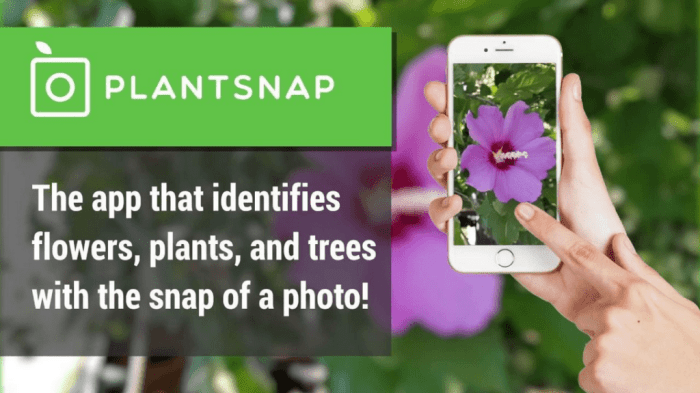Free Plant Identification App for Android Your Pocket Botanist
Tired of staring blankly at a plant, wondering what it is? Introducing a free plant identification app for Android, your personal, pocket-sized botanist. This revolutionary app uses cutting-edge image recognition to instantly identify countless plant species, from common weeds to exotic flowers. Imagine effortlessly identifying that vibrant bloom in your garden or the mysterious vine growing by the creek – all from the comfort of your phone. It’s like having a botanical encyclopedia at your fingertips, ready to answer all your plant-related questions.
This comprehensive guide delves into the app’s features, from its user-friendly interface to its robust database. We’ll explore the crucial aspects of UX design, app functionality, and data management that make this app a must-have for any plant enthusiast. Prepare to unlock a whole new level of plant knowledge, right at your fingertips.
Plant Identification Apps for Android: A Comprehensive Guide
Identifying plants can be a daunting task, especially for beginners. Fortunately, a plethora of user-friendly plant identification apps for Android are now readily available, making the process significantly easier and more accessible. These apps leverage advanced image recognition technology and comprehensive plant databases to provide accurate and instant results.
Introduction to Plant Identification Apps
Plant identification apps for Android provide a convenient and efficient way to learn about the botanical world. They act as portable botanical guides, offering users quick access to information about various plant species. Common features include image recognition, detailed descriptions, and interactive maps.
- Image Recognition: The core function of these apps involves identifying plants through photographs taken by the user.
- Detailed Descriptions: Each identified plant typically comes with detailed information, including common and scientific names, descriptions, and characteristics.
- Interactive Maps: Some apps incorporate interactive maps, allowing users to locate similar plants in their local area.
These apps are utilized for various purposes, from hobbyists identifying plants in their gardens to researchers looking for specific species in the field. The market for these apps is constantly growing, driven by the increasing popularity of gardening and nature enthusiasts.
| Plant Category | Example Species |
|---|---|
| Flowers | Roses, Tulips, Orchids |
| Trees | Oak, Maple, Pine |
| Fruits | Apples, Bananas, Berries |
| Vegetables | Tomatoes, Peppers, Cucumbers |
| Herbs | Basil, Mint, Rosemary |
User Experience (UX) Considerations
User-friendliness is paramount in plant identification apps. A seamless and intuitive experience is crucial for engaging users and fostering a positive interaction with the app.
- Intuitive Navigation: Clear menus and simple navigation paths are essential to guide users through the app effortlessly.
- Clear and Concise Information: Providing concise and easily digestible information about the identified plant is key to keeping the user engaged.
- Effective Search Functionality: Users should be able to quickly and easily search for plants using various criteria, including common names, scientific names, or visual characteristics.
A well-designed search function will enable users to find the specific plant they are looking for without excessive effort. The app should guide the user through the identification process with clear instructions and visual cues. Examples include step-by-step instructions for uploading images or providing hints based on the user’s input.
App Functionality and Features

Essential features for accurate plant identification include robust image recognition, extensive plant databases, and offline functionality.
- High-Quality Image Recognition Technology: Accurate identification relies heavily on the quality of the image recognition technology, which should be able to distinguish subtle differences between various plant species.
- Comprehensive Plant Databases: The app should have a comprehensive database of plants, including detailed information on their characteristics and classification.
- Offline Functionality: The ability to access the database and identify plants without an internet connection is a critical feature, especially in areas with limited connectivity.
- User Feedback Mechanisms: User feedback is essential for improving the accuracy and comprehensiveness of the app’s plant database.
Data Collection and Database Management
The accuracy and reliability of the plant identification app depend on the quality and comprehensiveness of the underlying plant database.
- Data Collection Methods: Data collection methods should include various sources such as scientific publications, expert databases, and user contributions.
- Verification and Update Processes: Rigorous verification and update processes are needed to ensure the accuracy and currency of the database.
- Maintaining a Comprehensive Database: A comprehensive database ensures that the app covers a wide range of plant species.
App Design and Development
The app’s design and development should prioritize user experience and maintain app security.
- Design Principles: The app should be aesthetically pleasing, easy to navigate, and provide clear visual cues for user interaction.
- Technical Aspects of Image Recognition: The app must incorporate robust image recognition technology capable of handling various image conditions.
- Optimization Strategies: The app should be optimized for performance, ensuring fast loading times and efficient use of resources.
Marketing and Promotion
Effective marketing and promotion strategies are essential to attract potential users.
- Promotion Strategies: Strategies like social media campaigns, app store optimization (ASO), and collaborations with gardening communities can be implemented.
- Reaching the Target Audience: Targeting nature enthusiasts, gardeners, and researchers through relevant platforms and channels can significantly improve user acquisition.
Future Trends and Enhancements
Future plant identification apps could incorporate innovative features to enhance user experience.
- Augmented Reality (AR): AR integration could overlay plant information directly onto the real-world view, providing an immersive user experience.
- AI-Powered Features: AI-powered features could further enhance image recognition capabilities, enabling faster and more accurate identification.
